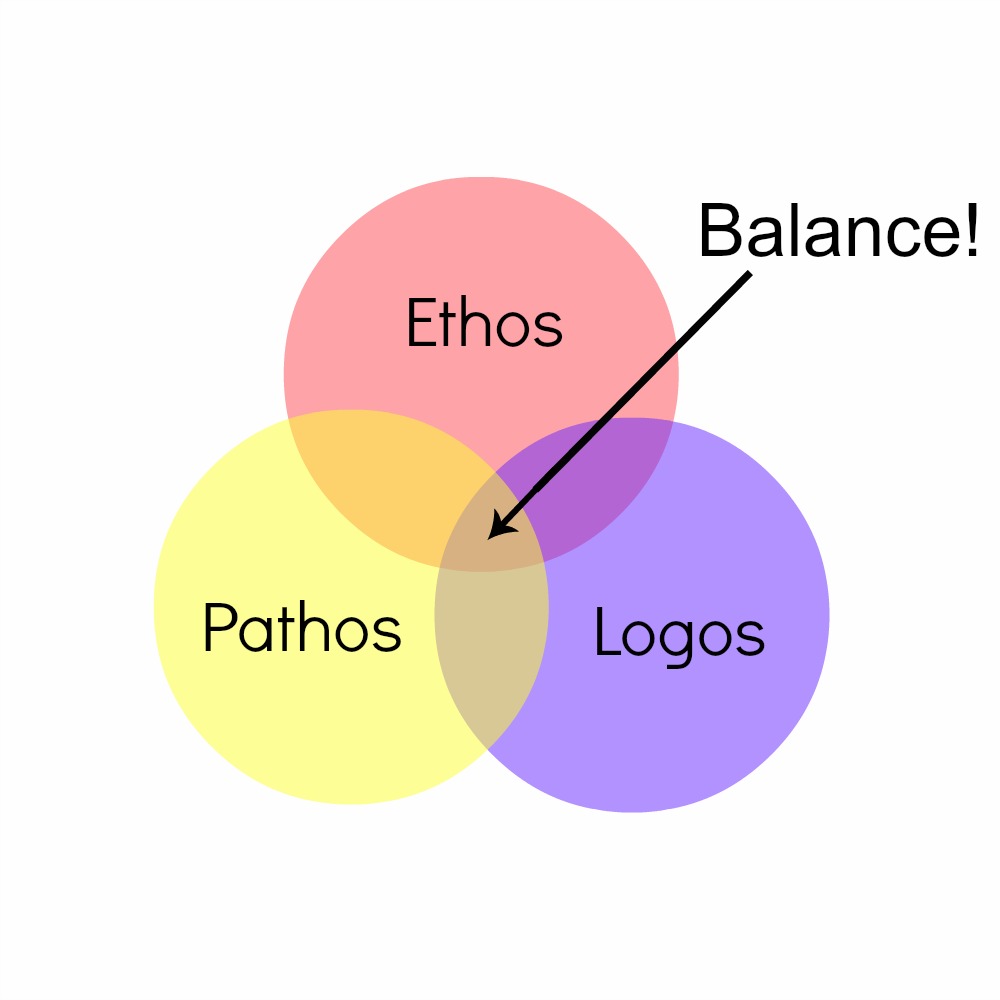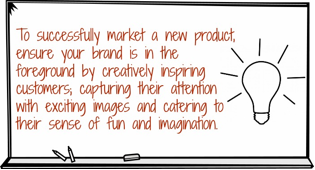
by Jace Vernon | Aug 23, 2013 | Creative Marketing, Video Marketing, Whiteboard animation, Whiteboard Video
Best Whiteboard Animation: the Best Form of Edutainment
When it comes to trying to sell your product to consumers, especially in the current economy, you may become frustrated with their short attention spans, fast-paced lifestyles, and tendency to hum simple tunes while plugging their ears and clutching their wallets in a vice grip. If only there were a way to trick potential buyers into learning everything they need to know about a product or service all under the guise of being entertained! Well, you’re in luck! Whiteboard animation is the best way to entertain your audience while educating them about your business and all the many ways you can help them better their lives. Here are just a few examples of why whiteboard animation takes the cake when it comes to edutainment:
Improved communication of ideas
Whiteboard marketing videos don’t necessarily need to be promotional. If you have a complex set of ideas that you need to convey to potential buyers or even employees – whiteboard can help to improve learning and increase message retention. The symbolic illustrations in whiteboard videos make complicated ideas easier to understand and therefore, remember.
It’s a different kind of media
With all the many media inputs consumers are bombarded with every day, people have grown skeptical of anyone who even remotely reminds them of a salesman, whether or not they’re actually trying to sell them anything. You could have a product that will make peoples’ lives significantly easier, but if they’re not willing to listen to a sales pitch, you have no chance. Whiteboard animation bypasses message filters in the brain with its visual storytelling method. The creativity and artistic illustrations in a whiteboard marketing video can get through consumers’ thick skin, ensuring your message will reach the intended prospects.
It has an impressive teaching resume
When it comes to education, whiteboard animation has been used as chapter summaries for textbooks, to teach languages, demonstrate new software or products, or teach employees company policies or appropriate workplace conduct. Whiteboard animation has the unique ability to incorporate several different kinds of media including photos, illustrations, audio, animation, even other videos. People tend to find the variety of media in whiteboard videos much more engaging than a traditional advertisement or talking head promotion.
It’s simple
Whiteboard videos use a simplified manner of illustrating to give information to the viewers. The simplistic illustrations combined with voice-over narration promote the feeling of storytelling – in most cases taking the viewer back to the innocence and simplicity of childhood. The presence of a hand in the video, or live drawing, makes the video seem more realistic and viewers are better able to fully understand and retain the message. Whiteboard animation keeps your audience captivated by engaging them in the artistic creativity. Illustrations, combined with a pleasant background tune and professional voice-over make up a deadly trio of advertising – consumers just can’t complain about something so easy.
Originally featured on Business to Community
+Jessica Anderson
by Jace Vernon | Jun 24, 2013 | video
“The most basic way to get someone’s attention is this: Break a pattern.”
-Chip Health, Made to Stick: Why Some Ideas Survive and Others Die
We have been in search for the perfect scripting process since we started at Ydraw. We’re not there yet, but here are some tips to keep in mind when you start on your next script. These tips have helped Ydraw create whiteboard animation videos that are three times more engaging than the average internet video.
Begin with Your Core Message
What is the most simple, concise way you can paint the picture of your service? Let’s begin there, because the competition for an audience has become stiff. The average YouTube video loses half its audience (we call this video abandonment) within 15 seconds. That number is shocking, but it’s the climate that sites like YouTube and Vimeo have created with suggested videos. Something more enticing is always a click away. Your focus should be on creating a script that will engage an audience from the beginning and keep them on your video—so stop wasting their precious time and get to the point.
Be Unexpected
One of the most effective ways to break away from the norm is to use the “blindside effect.” Who was prepared for Mark to pop up in Don’s introduction? No one really expected it to happen, until he did it two or three times and established a pattern. Using something that catches the viewer off guard piques their interest once again. This causes the viewer to stick around longer than they intended. We incorporate this into all of our scripts in order to keep your viewers watching your full video.
As always, if you have any questions or comments for us here at Ydraw, let us know!

by Jace Vernon | Jun 17, 2013 | video
What the 2013 Finals are Teaching Us about Marketing
In the season finale of Game of Thrones we learned a crown doesn’t give you power, but an army does. “King James” has played a sizable chunk of these playoffs with a supporting cast that seems disinterested or overwhelmed at times. Dwayne Wade’s fragile knees and Chris Bosh’s determination to shoot threes are poison to the Heat. It didn’t take long for the Spurs to discover that the moment they cage Lebron, the Heat run out of options quickly. If game 5 taught us anything, it’s that if Spurs solid core play well, a boost from the role players will overwhelm the opposition. The Heat rely on James being impossible to stop, while the Spurs have consistent producers they can count on every night. So what has this exciting series taught us about marketing? We have watched two very different teams take turns blowing each other out every other game. It’s time to decide whether your marketing strategy is better off with a flashy Lebron strategy or the old school San Antonio approach.
Let’s break down San Antonio’s strategy. This strategy is great for those companies struggling to keep consistent traffic on their site. Ask yourself – What is the core of your marketing strategy? Are you relying on marketing that lacks consistency? Let’s take a look at the building blocks of the San Antonio Spurs.
Tony Parker, Tim Duncan, and Manu Ginobili make up the core of the Spurs. Their new pieces, Kawhi Leonard and Danny Green, are new additions they’ve added to their strategy. What is your core strategy—this is what brings you consistent conversions. Once you’ve established your core, you can begin adding pieces to your strategy. Although new additions to your strategy can include risk, you can strike gold with these new techniques (Danny Green now holds the title for the most three’s made in a final series) or your risk won’t pay off; that’s okay, because you know your core is coming through.

What should be the core of your marketing?
1. Organic Search (SEO) – It’s hard to beat being in the right place at the right time. No one likes to be sold, but everyone likes to discover something great. Google has created an amazing platform for this. You need to be the gold your target audience finds at the end of their Google search.
2. Paid Search – If done right, PPC can generate traffic instantly. If done wrong, you are better off simply flushing your money down the toilet. Building a great campaign is essential to your success. Get your quality score up and pay attention to it. You need to know exactly where your money is going.
3. Email Marketing- Don’t spam; unless, of course, you are trying to lose your audience as quickly as possible. Learn from the best, Wistia is a great example of a company that sends emails that have personality and include useful information. You will keep your audience if you can provide useful information on a regular basis.
This next technique can be a great tool for companies who are looking to add to their core marketing. This is the Danny Green of your marketing strategy. This is the piece that adds to your core and lifts you above the competition. Video should be a part of every marketing budget. One reason Wistia’s email marketing is so successful is because they include a video in almost every email. The following strategy helps boost your SEO efforts.
Leverage Video for SEO- I never realized the backlink opportunities I was missing out on by posting my videos on YouTube and Vimeo. By posting your video on these sites you do two things: you lose traffic to the next suggested video and eliminate any opportunity for a potential backlink. We discovered a new technique for leveraging video for backlinks. By hosting our videos on Wistia, we give viewers the option to embed the video onto their site. This option is also available on YouTube and Vimeo, but when those videos are embedded the link points back to your profile on those sites. This is beneficial for YouTube, but not you. With some tinkering you can add a backlink into the code of Wistia videos. Every time your video is embedded you will receive a backlink. We’ve had a lot of success stricking deals with customers.
At Ydraw we’ve created Fast and Easy Videos. This new product was built around the idea that companies benefit from producing quality videos to consistently communicate with their audience. Fast and Easy Videos come at a quarter of the price of our other videos and are done in hours, not days.
A detailed post on Leveraging Video for SEO is coming Friday. We’ll give you the step by step guide.
Okay, we have our core; now let’s swing for the fences – Let’s take a Lebron approach – where can we take some risks?
This is a unique way to approach marketing but it can be a perfect approach for certain companies—if a Lebron James is willing to take his talents to your beach.
Partner with Bloggers- in Neil Patel’s latest blog post, he described how he landed 25 thousand hits on a SEO guide he created by linking to Moz (this became his Lebron James). Moz responded with a write up on the guide and the traffic flew in. Patel hit a home run; he now partners with other blogs when he launches new guides. This isn’t a marketing technique that qualifies for the core because it’s hit or miss. A blog has to be willing to advertise your company. You can’t rely on blogs partnering with you every week—they don’t like to give away traffic. However, when you spend the time and money on great content (Neil Patel spent six months on his guide) it can drive traffic for both you and a partnered blog and it can be a massive boost to your company. Then your task becomes giving them a reason to come back.
So, let’s look at the Lebron strategy in a little more detail.
Convincing bloggers to cover your product or service can be a huge boost for your company. In Ryan Holiday’s book, Trust Me, I’m Lying, he breaks down how to leverage bloggers for your marketing efforts. He begins by explaining how bloggers make their money. Some are paid per post and others are paid for traffic. This means a blogger makes the big bucks by constantly producing high quality content that appeals to his/her audience. It also means that an audience won’t stick with a blogger if they feel like they are being sold a product. So, how do you get covered by a popular blogger while keeping their integrity in tact? First things first, keep in mind that they make the big bucks by constantly producing content, so typically they aren’t opposed to a little help if it is going to benefit their readers. Toyota got creative and gave a car to a popular vehicle blogger and told him to write about the car, good or bad. Some companies will naturally draw bloggers to covering them because of new technology or innovation. Other companies may need to nudge a blogger a bit. The first step is to identify popular bloggers in your field. Then approach them with a simple pitch that explains why your message would benefit their readers. If you can pitch your message in the right way and provide enough information that their blog is nearly written for them, they’d be crazy not to consider it.
Discover what approach works best for your company. Are you better off with the slow, methodical San Antonio Spurs approach or will you benefit more from a Lebron James boost. Better yet, find a way to use both.
Tune in next week for a detailed post on leveraging blogs for marketing.
+Wesley Bledsoe

by Jace Vernon | May 13, 2013 | Animated Whiteboard Videos, Creative Marketing, Marketing, Memory, Video Marketing, video online marketing, Video Scribing, Whiteboard animation, Whiteboard Video, Writing a Script, Ydraw
Writing whiteboard video scripts using Ethos, Pathos and Logos
When you sit down to begin writing the script for your online marketing video, you want to keep three little words in your mind: Ethos, Pathos, and Logos. These are the modes of persuasion. When trying to persuade somebody to do something – say, buy your product – you need to make sure we sound credible, appeal to the emotions, and prove certain truths about our company and product. If you’re a good marketer, you’ve obviously lived by the E.P.L mantra, but with whiteboard animation things can be a little different. Here’s some information on how using ethos, pathos and logos in a whiteboard video can work for you:
Ethos is the integrity of the presenter. It is how qualified the presenter appears to be to the audience. When writing a script for a marketing video such as a whiteboard animation video, you have to rely more heavily on everything other than body language or presence to get your message across. If you’re trying to sell something, have an image of the CEO telling viewers all about the company. Write a part with some testimonials. Whoever your main character is, make sure they look the part, and that the audience can tell they are a notable figure and have vested interest in the company or product.
Pathos is triggering emotions. In your whiteboard video, throw in a metaphor or simile, or deliver your message powerfully and passionately. Make the audience feel something, whether it is sadness for the characters who don’t have your product, joy for the characters who do, or excitement at the prospect of purchasing your product themselves. Pathos may also be used to provoke fear in order to sway viewers – but it is always better for whiteboard videos to focus on the fun, positive aspects. Try to play on viewers’ hopes and dreams by describing how their life could be when they follow the call to action.

Logos is the logical appeal used when describing facts and figures that support your cause. Logos and ethos are sort of related – in the sense that using logos can strengthen your ethos by making you look even more knowledgeable on the subject. However, be tasteful in your use of logos when making a whiteboard video – you want your audience to retain information with ease. If you use charts and figures, make sure to incorporate it into the theme of the video, and don’t throw so many statistics at them that they can’t remember why they clicked play.
These are what you need to keep in mind when writing. Ethos, Pathos, and Logos. Thanks Aristotle.
by Ydraw | Feb 22, 2013 | video
Whiteboard animation not only has the highest viewer retention rate, it is the most flexible of video marketing mediums. It’s endlessly versatile – appealing to all kinds of learning styles – and fully ready to incorporate your company’s unique personality.
Let’s try a little experiment – read this sentence:
To successfully market a new product, ensure your brand is in the foreground by creatively inspiring customers; capturing their attention with exciting images and catering to their sense of fun and imagination.
Now, in ten days close your eyes and repeat that sentence back to me. No? Alright, get somebody to read the sentence aloud to you, and then in ten days repeat it back to them. Or, maybe you prefer to look at this:

If you are able to repeat this sentence word for word after ten days, you’re awesome. If you can repeat back the general idea of the sentence, you’re less awesome, but still pretty great. If after ten days you can’t remember it at all, join the club.
But despite whether you are a visual or auditory learner, when an element of humor is added, the general idea of that long, boring statement is much easier to remember and has the potential to be stored in our memories for much longer. Marketers need keep this in mind when creating promotional videos, as well as the different learning styles in order to make a significant impression on consumers.
There are three distinct learning categories that every person falls into: Visual, Auditory and Kinesthetic. Visual learners perform best when information is brought to them in a visual manner such as text or images. They thrive on illustrations, charts, diagrams, etc. These are the note-takers; they often feel a need to convert the spoken word into text. Auditory learners do best when they can hear the instructions through a CD or cassette tape or through somebody simply talking to them. An auditory learner is able to process, comprehend and retain information given during a lecture with a high level of accuracy. These are the ones whose heads never nod during conferences. Kinesthetic learners are the goers and doers. They need to learn by touching, holding, trying and failing and trying again.
While we all have a dominant learning style, everyone benefits in some way from each. The reality is that we all have custom learning styles that vary in combinations of visual, auditory and kinesthetic learning. Ideally, your video marketing campaign would be able to incorporate each of these three styles when creating an advertisement to inform consumers of your product. However, kinesthetic is hard to put into video form, so what marketers usually have left to work with is visual and auditory. And there’s good news for marketers: video is the easiest and most effective way of combining visual and auditory learning styles in order to appeal to all consumers! Video combines auditory instruction with visual. Not only are viewers hearing about all the benefits your product or service provides, they can see those benefits with their very own eyes.
However, simply making a video won’t guarantee a boost in sales. You need a way to make your video stand out from the millions of other online videos fighting for views. After you’ve catered to consumers’ different learning styles, how are you going to keep their attention?
1. Use Whiteboard
Whiteboard animation has proven time and time again that it is the medium viewers prefer. Its viewer abandonment rate is as low as 30% for a two-minute video. This is largely due to its unique use of images and text combined with audible narration. People are fascinated with the idea of watching an illustration come to life before them, and that initially captures and then holds their attention. The images are fun, colorful and creative. The text is even fun colorful and creative, and the narration ties it all together, guiding emotion and sparking excitement throughout the scenes.
2. Never Skip Out on Background Music.
A seemingly minuscule detail, background music is pertinent to your advertisement. Music gives life to video and provides a certain rhythm that viewers crave. It fills in intentional or unintentional dead spots, making the whole video seamless and fluid. Be aware of the type of background music, though. You don’t want to play smooth jazz behind a promotion for an amusement park – that might give viewers the idea that the park was specifically designed for attendees aged 55 and up. On the other hand, you don’t want to put an ad for orthopedic shoes on top of Usher’s best selling track. You just won’t get the reception your video deserves.
3. Make ‘em Laugh
Humor is one of the most important features your video can possess. A study presented at the American Psychological Society found that the use of humor in an educational setting significantly boosts interest and participation. This is incredibly applicable to video marketing, because essentially, your video is being produced to educate consumers about your product. The study concluded by saying, “Humor is… a social lubricant. It can facilitate interactions, and that is exactly what we found.






